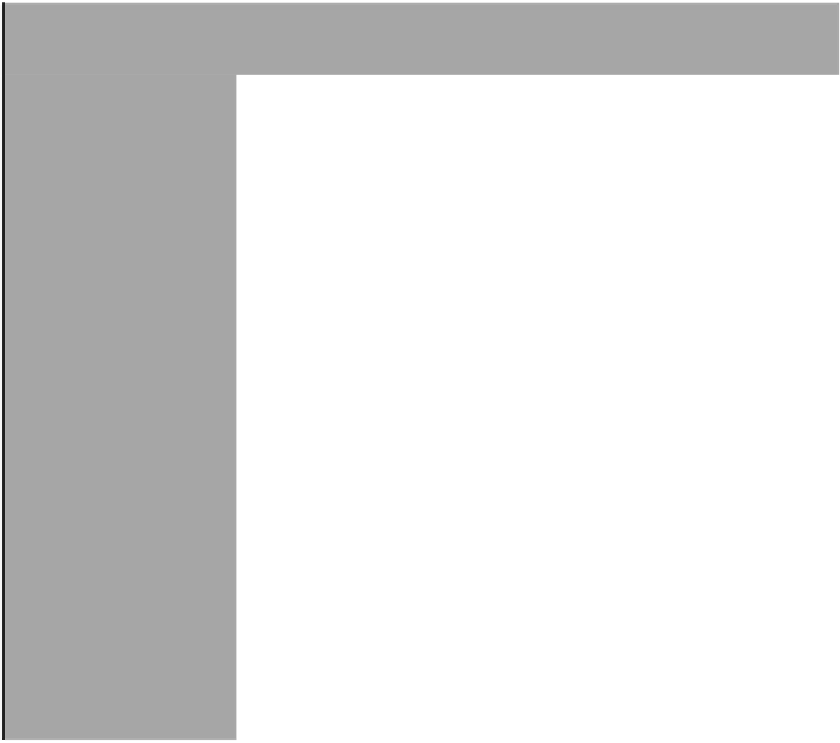Geology Reference
In-Depth Information
Table C2
Dealing with composite soil types
-
based on GCO (1988) but generally compatible with
much international practice.
PRINCIPAL SOIL TYPE
TERMINOLOGY
SEQUENCE
TERM FOR
SECONDARY
CONSTITUENT
% OF SECONDARY
CONSTITUENT
With a little
<5
Very coarse (BOULDERS
& COBBLES)
(>50% of soil >60mm)
Secondary constituents
(
With some
5
-
20
With much
20
-
50
<5
Silty, clayey or
silty/clayey
5
-
15
Very (silty, clayey
or silty/clayey)
15
-
35
Secondary constituents
before principal
(excluding cobbles &
boulders)
Coarse (GRAVEL &
SAND) (>65 % gravel &
sand sizes)
AND/OR
Slightly (gravelly
or sandy)
<5
Gravelly or sandy
5
-
20
Very (gravelly
or sandy)
20
-
50
Slightly (gravelly
or sandy or both)
<35
Fine (SILTS & CLAYS)
(>35% silt & clay sizes)
(gravelly or
sandy)
35
-
65
Examples: slightly silty/clayey, sandy GRAVEL. Slightly gravelly, sandy SILT. Very gravelly
SAND. Sandy GRAVEL with occasional boulders. BOULDERS with much
finer material (silty/clayey,
very sandy gravel).
For
fine soils, plasticity terms should also be described where possible, viz:
'
non-plastic
'
(generally silts),
'
intermediate plasticity
'
(lean clays),
'
high plasticity
'
(fat clays).
Notes:
1
Full name of
finer materials should be given (see examples).
2
Secondary soil type as appropriate; use
'
'
silty/clayey
when a distinction cannot be made between
the two.
3
If cobbles or boulders are also present in a coarse or
fine soil, this can be indicated by using one of the
following terms relating to the very coarse fraction after the principal:
'
with occasional
'
(<5),
'
with some
'
(5
-
20),
'
with many
'
(20
-
50), where
figures in brackets are % very coarse material expressed as a fraction
of the whole soil (see examples).





















